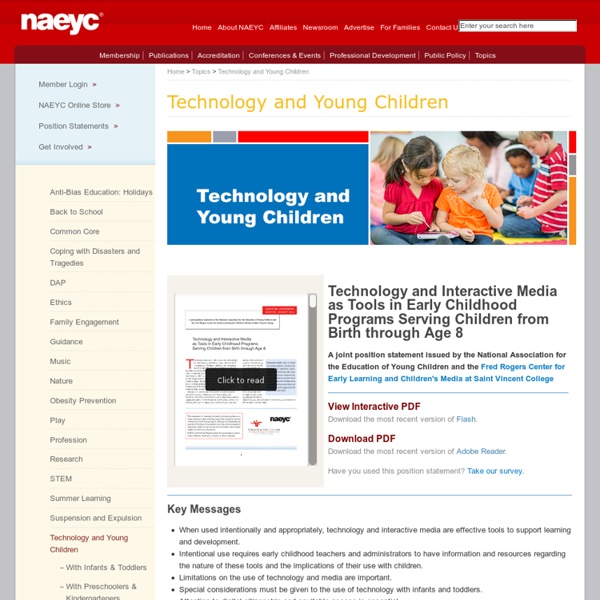Mobile Learning Publications
UNESCO Mobile Learning Publications Today there are over six billion mobile phone subscriptions worldwide, and for every one person who accesses the internet from a computer two do so from a mobile device. Given the ubiquity and rapidly expanding functionality of mobile technologies, UNESCO is enthusiastic about their potential to improve and facilitate learning, particularly in communities where educational opportunities are scarce. This Working Paper Series scans the globe to illuminate the ways in which mobile technologies can be used to support the United Nations Education for All Goals; respond to the challenges of particular educational contexts; supplement and enrich formal schooling; and make learning more accessible, equitable, personalized and flexible for students everywhere. UNESCO Policy Guidelines for Mobile Learning Illustrative Initiatives and Policy Implications Exploring the Potential of Mobile Technologies to Support Teachers and Improve Practice Mobile Reading Back to top
The Fred Rogers Center
Do technology tools and interactive media like iPads, cameras, or e-readers, belong in the early childhood classroom? If so, how should early childhood educators be using them? What are the best ways and when are the best times to use technology with very young kids in a classroom setting? The NAEYC-Fred Rogers Center position statement is meant to help educators answer some of these questions. Enter the Pennsylvania Digital Media Literacy Project, an initiative that supports standards-aligned practices and high-quality programs that extend and enrich opportunities for learning and development through digital media literacy. How can educators know if they’re using technology well? To help, we are pleased to introduce a checklist that brings together recommendations from all of these experts. We hope this document will serve as a planning and reflection tool. It isn’t scored.
Early Educator – New Resources and Teaching Strategies for Early Childhood Education Teachers Working in Kindergarten, Nursery, Daycare, Preschool and Child Care centres with kids 0 to 5 years on the App Store
My Reflections:Challenges of Early Childhood Education - Blog
Children's Technology Review
National Education Technology Plan
About the National Educational Technology Plan The U.S. Department of Education released the 2024 National Educational Technology Plan (NETP): A Call to Action for Closing the Digital Access, Design and Use Divides. First released in fulfillment of Improving America’s Schools Act of 1994, NETP has been updated multiple times since its original release, most recently in 2016. While past NETPs have largely served as surveys of the state of the field, the Department of Education’s 2024 NETP frames three key divides limiting the transformational potential of educational technology to support teaching and learning, including: The Digital Use Divide, addressing opportunities to improve how students use technology to enhance their learning, including dynamic applications of technology to explore, create, and engage in critical analysis of academic content and knowledge;
Selected Resources on Technology in Early Childhood Education
Essential Resources Recent reports Barron, B., G. Selected References & Resources from the 2009-2012 Position Statement Process Alliance for Childhood. 2004. Selected Readings on Teaching and Learning Online for EC Teacher Education & Professional Development Center for the Child Care Workforce. 2007.
Leo's Pad: Preschool Kids Learning Series on the App Store
What Does “Reggio-Inspired” Mean? | The Voices of Children
Allie is three years old. She is highly verbal. She amazes her parents, Paul and Michelle, with her language, her insightful questions and her observations on a daily basis. They read that children in a truly Reggio-inspired classroom become self-directed learners, confident in their competence to accomplish whatever they set out to do. Small groups of children working on different endeavors.Perhaps one group resuming work on yesterday’s goal of building a block castle taller than they’ve built before.Another group working with a teacher on an ongoing project to make a birdhouse out of clay.Another small group studying through drawing a butterfly that volunteered in the outdoor classroom and is temporarily captured in a large cylindrical net habitat.Three children working together to create the longest train ever with magnet rods.And a small group working to write letters to a friend who has been home sick for a few days. What does working with Reggio principles require of the teacher?
The Joel Test: 12 Steps to Better Code
by Joel Spolsky Wednesday, August 09, 2000 Have you ever heard of SEMA? It's a fairly esoteric system for measuring how good a software team is. No, wait! Don't follow that link! The neat thing about The Joel Test is that it's easy to get a quick yes or no to each question. A score of 12 is perfect, 11 is tolerable, but 10 or lower and you've got serious problems. Of course, these are not the only factors that determine success or failure: in particular, if you have a great software team working on a product that nobody wants, well, people aren't going to want it. 1. 2. If the process takes any more than one step, it is prone to errors. For this very reason, the last company I worked at switched from WISE to InstallShield: we required that the installation process be able to run, from a script, automatically, overnight, using the NT scheduler, and WISE couldn't run from the scheduler overnight, so we threw it out. 3. 4. Bug databases can be complicated or simple. 5. 6. 7. 8. 9. 10. 11.



